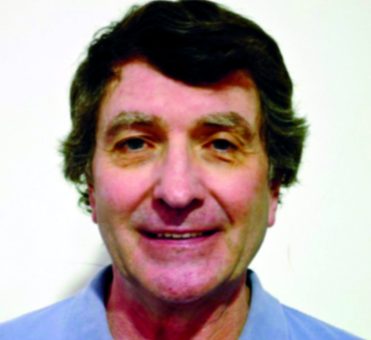BLOOMINGTON, Minn. — Forty years ago, I air mailed in my first race report, unsolicited, to SPEED SPORT.
It was two typed pages — no email in those days — about a night of racing at a local speedway south of Minneapolis. When the story appeared in the newspaper it was cut, and rightly so, to a single paragraph.
But my foot was in the door at SPEED SPORT!
Working with publisher Chris Economaki and the editors, I started to cover more races, including IMSA, Can-Am and, eventually, Formula 1.
In the early days I covered the support races and maybe F-1 qualifying while a senior writer covered the F-1 race itself.
SPEED SPORT did not have a full-time F-1 correspondent, so I asked Economaki if I could cover the full 16-race F-1 season in 1984. He agreed and the pay was minimal — I was working as a freelancer as I always have — but the experience I gained was invaluable.
Economaki taught me a lot and was always very patient and helpful. Over the years, I have worked with many great editors at SPEED SPORT, the most recent being Mike Kerchner.
Since 1984, I have been to more than 600 F-1 races.
People often ask me which are my favorite countries to visit and which are my favorite race tracks. I always answer that every country and track have their good and bad points.
But I really like the “M” races: Melbourne in Australia, Montréal, Italy’s Monza and Monaco. And then there is Spa in Belgium and Suzuka in Japan, which are proper old-school tracks, fast and challenging.
I have many good memories and some not so good ones from all my years in Formula 1. The battles between Ayrton Senna and Alain Prost when they were McLaren teammates in the late 1980s, and then when Prost moved to Ferrari, were marvelously intense but also disturbingly ruthless.
I will never forget how Senna rammed Prost off the track at the start of the 1990 Japanese Grand Prix, thus ensuring that he, Senna, would clinch the world championship that year.
Michael Schumacher could be equally ruthless.
During the 1994 Australian Grand Prix, Schumacher punted Damon Hill and that meant Schumacher took the championship. Schumacher tried the same thing in Spain in 1997, but this time it did not work and Jacques Villeneuve won the title.
When it comes to particularly bad memories of a race weekend, two stand out. There was the 1994 San Marino Grand Prix weekend where Roland Ratzenberger lost his life on Saturday and Senna was killed the next day.
And then there was the 2005 United States Grand Prix at Indianapolis Motor Speedway when only six cars, the ones on Bridgestone tires, started the race, while the 14 drivers on Michelin tires peeled into the pits after the warm-up lap.
The Michelin engineers decided after practice and qualifying that their tires were not durable enough to handle the banked track.
A solution could have been found. Then FIA president Max Mosely insisted that a temporary chicane to slow the cars before the banked turn was simply not possible.
All in all, the Indianapolis debacle was an insult to race fans and it set back F-1 in this country by a good deal. So, it is great to see that by next year there will be three F-1 races in the U.S. — Austin, Miami and Las Vegas.
Like all the major racing series, Formula 1 has grown immensely over the years. When I started there were fewer than 100 journalists in the media center. Recently, before the COVID-19 travel restrictions, that number had grown to nearly 500.
During the race weekend, the teams make their drivers available to the media at various times. These press conferences take place at the teams’ hospitality areas. I can remember being one of maybe half a dozen journalists who went to talk to the drivers, but in recent years it could easily be more than 40 journalists.
The F-1 teams used to get by with just a couple of transporters. Now, it takes more than 300 semi-trucks to haul the entire F-1 circus around Europe and it takes seven 747 freight planes to take everything to the races outside of Europe.
In the paddock’s team hospitality area, the team’s motorhomes were literally just that: motorhomes. Now, at the European races, the teams’ motorhomes are two- or three-story buildings that take days to assemble and disassemble.
When I started F-1 full time in 1984, there were 16 races in the season and this year there are 23 races.
Another big change has been on the commercial side of things. Bernie Ecclestone was the czar of Formula 1 from the late 1970s until 2017 when Liberty Media bought F-1’s commercial rights.
Ecclestone’s commercial strategies were brilliant. They made him a billionaire and many drivers and team owners millionaires. But it became obsolete. For example, he did not understand or accept social media. Liberty Media has really raised the stakes and taken things to a new level on the marketing side.
As for me, after 40 years the time has come to make some changes as well, and I am going to take several steps back. I will still go to the occasional F-1 race and because I won’t have a full schedule of F-1 races, I can attend some other racing series.
The last time I was at the Indy 500 was in 2003, which was the last time it did not conflict with Monaco. I will be heading back to the Indy 500 one of these years, as well as that “M” race — Monaco.
